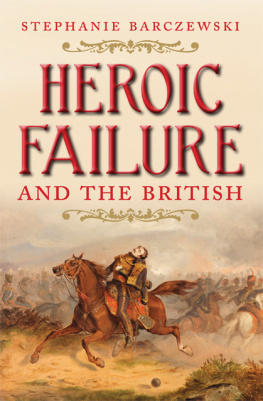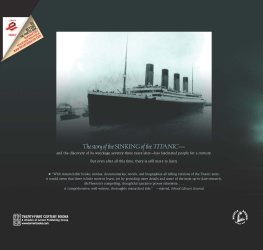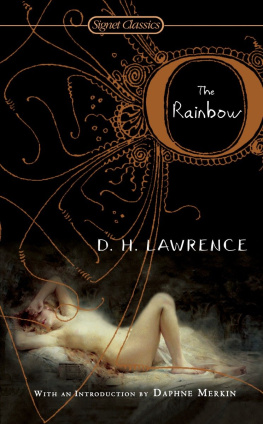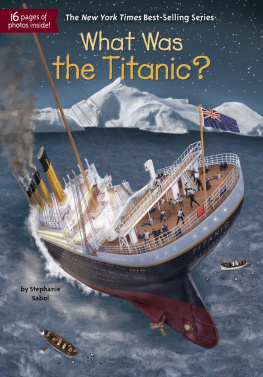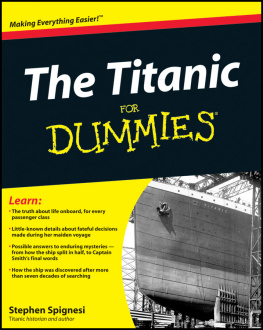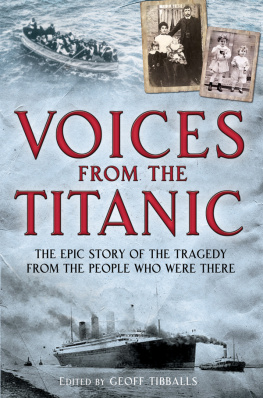Continuum International Publishing Group
The Tower Building, 11 York Road, London SE1 7NX
80 Maiden Lane, New York, NY 10038
www.continuumbooks.com
Stephanie Barczewski 2004 and 2011
All rights reserved. No part of this publication may be reproduced or transmitted in any form or by any means, electronic or mechanical, including photocopying, recording or any information storage or retrieval system, without prior permission from the publishers.
First published 2004
Paperback edition published 2006
This anniversary edition with revisions published 2011
British Library Cataloguing-in-Publication Data
A catalogue record for this book is available from the British Library.
ISBN: 978-1-4411-9-308-7
Library of Congress Cataloging-in-Publication Data
A catalog record for this book is available from the Library of Congress.
Illustrations
Between pages 96 and 97
Between pages 192 and 193
Illustration Acknowledgements
The author and publishers are grateful to the following for permission to reproduce illustrations: Harland & Wolff, nos 25, 1112; Mayfair Cards of London, nos 1, 9; Southampton City Collections, nos 68, 20. Illustrations 10, 1319 are by the author.
Acknowledgements
In the course of writing this book, I have incurred a long list of debts, both professional and personal. First, I owe tremendous gratitude to the numerous people in the United Kingdom and the Republic of Ireland who assisted my research. In Southampton, I would like to thank Lindsay Ford of the Southampton Maritime Museum; T. P. Henry of the Totton and Eling Historical Society; Kevin White, Conservation Manager for Southampton City Council; and Nigel Wood and Derek Amey of the West End Local History Society. My special appreciation goes to Brian Ticehurst, President of the British Titanic Society, who generously provided time, insight and a warm welcome to his home (complete with tea and biscuits); he even allowed me to hold a stewards locker key that was actually on the Titanic. In Belfast, I am extremely grateful to Michael McCaughan of the Ulster Folk and Transport Museum; John Parkinson, Jim Carlisle and Stephen Cameron of the Ulster Titanic Society; and Patrick Toms of the Shannon Ulster Titanic Society. I must single out for special gratitude Una Reilly of the Ulster Titanic Society, who welcomed me to the Titanic: Made in Belfast celebration in the spring of 2002 with tremendous warmth and grace. During the same event, John Wilson Foster of the University of British Columbia helped me to understand the Ulster dimension of the Titanic story.
In Godalming, John Young of the Godalming Museum was very helpful in my research on Jack Phillips; Leslie Clarke of the Town Clerks office allowed me to see the postcard in Phillipss handwriting that still hangs on the wall there. In Colne, Christine Bradley of the Colne Public Library supplied me with essential material about Wallace Hartley; and, although we never managed to meet, Alan Sutherland was also of great assistance in providing information about the Titanics bandmaster. In Dalbeattie, Tommy Henderson of the Dalbeattie Museum contributed invaluable material on William Murdoch. I would also like to thank Gillian Hutchinson and Arthur Janes of the National Maritime Museum; Jo Wisdom of St Pauls Cathedral; Alan Scarth of the Merseyside Maritime Museum; Stephen Deuchar, Director of Tate Britain; and Roger Knight of the Greenwich Maritime Institute.
This book is a product of my seven years at Clemson University, where I have enjoyed the benefits of wonderful colleagues and a supportive environment for research. I am particularly grateful to Paul Anderson, Susanna Ashton, James Burns, Elizabeth Carney, Roger Grant, Alan Grubb, Steve Marks and Don McKale for their friendship, insight and willingness to listen whenever I had a particular problem to iron out. My department chair, Tom Kuehn, successfully fought for a sabbatical leave against the wielders of the budgetary axe so that I could complete the preparation of the manuscript.
I would also like to thank Martin Sheppard and Tony Morris of Hambledon and London for their work on the original edition, and Michael Greenwood of Continuum for his assistance with this centenary edition. My gratitude also extends to all those Titanic experts who suggested corrections regarding the technical details of the ship and the sinking. Any lingering mistakes are entirely my responsibility.
To my students, as well, I owe a debt. Many of the ideas this book contains emerged from a seminar I taught under the auspices of the Calhoun Honours College, in which the participants could always be relied upon for stimulating discussions. The Calhoun Honours College also granted me the funding to purchase many of the materials on which I have relied in both teaching and researching the Titanic story. The research I carried out in the United Kingdom and Republic of Ireland would not have been possible without Clemsons support, and in particular without the Lightsey Fellowship that I received in 2001. Special thanks goes to William Lasser and the Clemson National Scholars Program for giving me the opportunity to take some of Clemsons best and brightest students to Britain in the summers of 2002 and 2003.
Beyond Clemson in the wider academic community, I will be forever indebted to the two people most responsible for my scholarly accomplishments, David Cannadine and Linda Colley. I would also like to thank Miles Taylor for inviting me to present an early version of my research at the University of Southampton, and David Bell of Johns Hopkins University for providing various forms of support over the years. Tony Morris of Hambledon and London has long been a friendly voice in the publishing wilderness, and Martin Sheppard took a chance on this project and gave me a book contract before I had written a single word. Much of the writing took place in the British Library; it is remarkable how productive and efficient a scholar can be in such an ideal environment.
Every book is the product of ones personal as well as professional life, and an author incurs personal as well as professional debts in the course of writing. Ed Moisson has made and continues to make my research trips to London much more fun. My mother and father, Patsy and Steven Barczewski, have been, as always, my best supporters. My husband, Michael Silvestri, is the source of my greatest assistance, advice and joy; there is simply no way to express in words what he has contributed to this book and to my life. And without my dogs, Boomer and Whopper, the petty grievances of life would be far slower to dissipate; it is remarkable how soothing it can be to watch them chase each other around the backyard, wrestle over a toy or trot jauntily around the block on their daily walk. For that reason, I dedicate this book to them.




